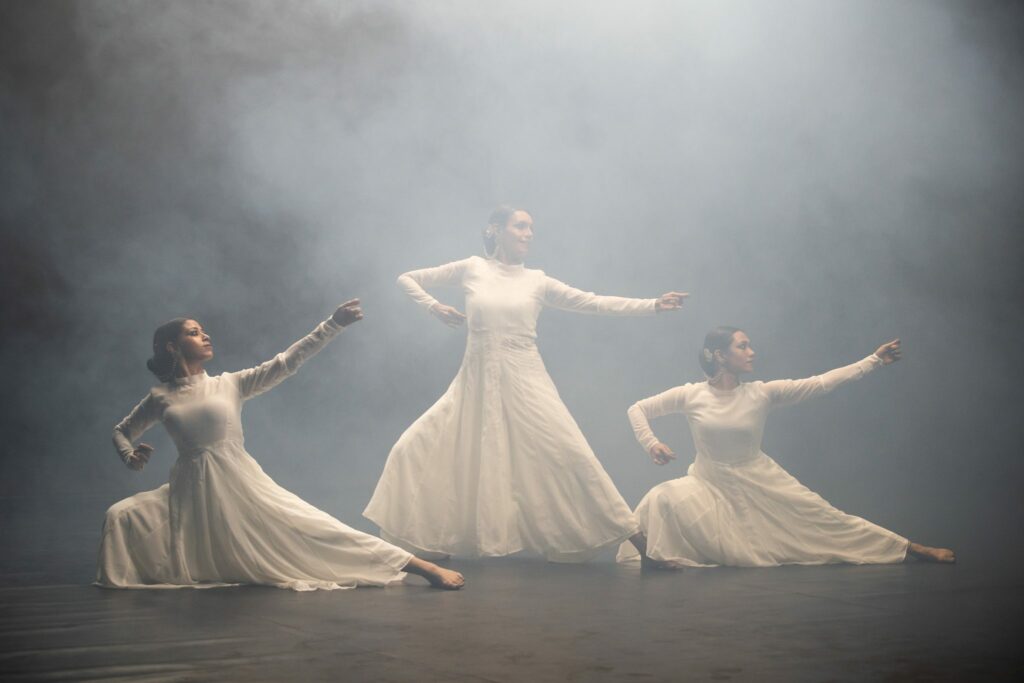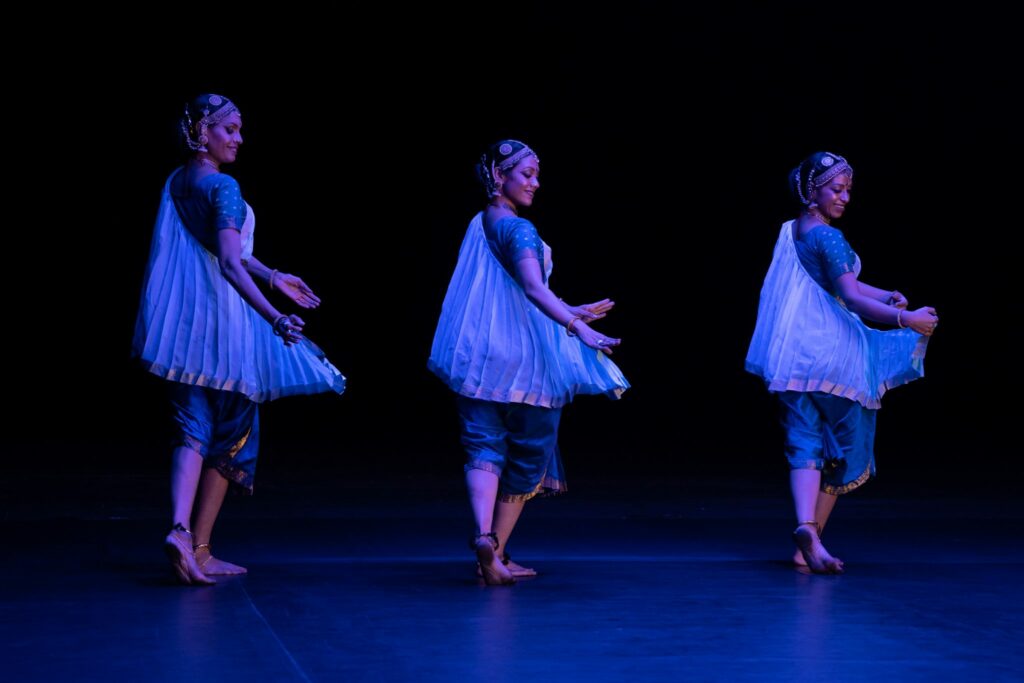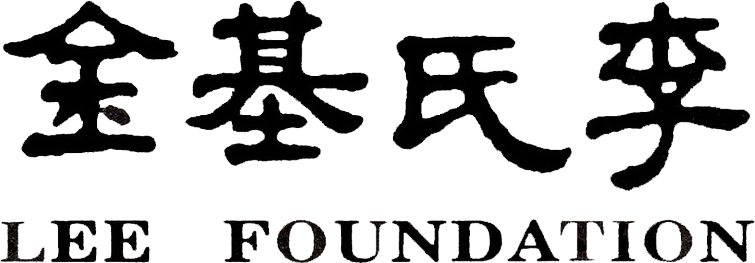By Vidhya Nair
VN: What motivated you to create Yavanika? What was your inspiration? Walk us through your process, from how you got the idea to the concept evolving, the director’s vision and what it was like to dance for the camera.
PG: I had been wanting to work on a group production for some time. Last year, I was supposed to present a group production at DIAP but it didn’t happen. As I have always been a soloist and duo presenter, this time I had to think differently.
I first started with different concepts & ideas. Then I landed on Kabir’s “Jheeni.” [ Kabir Das was a 15th century iconoclastic Indian poet-saint revered by Hindus, Muslims and Sikhs. He was raised and adopted by a Muslim weaver] My concept deals with the body as likened to a cloth and the journey of the being, life on earth and the return back to the Maker. Slowly, the concept came into play. “Yavanika” means screen, cover. I have also incorporated the idea of “Maya”- the illusion of what we believe to be real. The compositions I have used engage with the five elements within us and outside of us and we explore the screen as the body. A traditional repertoire was choreographed. The opening Alarippu focuses on our energies, then the concept of Samsara which refers to the cycle of the body’s rebirth and death and how it pleads to be delivered from Maya. Then the Thillana shows the uptake of physical energy as the soul dances out of the body and a finale showing the creation of the cloth as it returns to the Maker.
Dancing to the camera is not new to me. I’ve had a lot of experience facing the camera as I had done many teaching DVDs over the years. I also have been doing a lot of work online. It was a deliberate choice to not do this as a choreographed dance performance but to present it in the eyes of a cinematographer. It is a highly subjective point of view as there is no end to the ways one can capture dance on camera but this medium is able to traverse the stage and can bring the audience’s eye to certain moves. Without too much interference with the compositions or movements in the dance pieces, we have filmed it such a way that makes it very different from watching a stage performance.
I had engaged a filmmaker and cinematographer for this film. As people outside the dance world, they actively watched rehearsals and understood how dance is being performed. The film is a coming together of how they view through their camera lens and culminates both our visions as choreographer and filmmaker in the final outcome.
VN: What is unique about Yavanika, and about blending seer-poetry with classical dance?
PG: This was an attempt between what you can see on stage and what a camera can show. It is not meant to take away from the in-person experience but we are trying to use the advantages we have with this technology. It so happened that we have used compositions of different languages and applied philosophical questions about Samsara as life on earth. We looked at the parts of everyday life which are very real and connected it with the seer’s questionings on life and reality. We used a variety of approaches and put them on camera.


VN: Why is it important for you to make this film at this point in your career?
PG: I am not looking at points in my career. Today’s times bring out a trigger and opportunity to create. It was always something I wanted to do; it has been in my mind for some time. IPAC and Aravinth Kumarasamy (Curator & Convenor) provided me the basis to actually do it.
VN: What do you think about programs like IPAC in keeping Indian arts and culture thriving outside of India?
PG:There are now no geographical boundaries. It no longer matters which part of world this is being organised. Our world has become porous. What is important is that there should be vision in the programming and adequate resources to enable delivery. IPAC has made it available to students these past ten years. It also because of IPAC that Yavanika came to be created. A trigger and an incentive to try things out and providing a platform for it. Knowledge is essential for dancers and in trying to provide a varied experience and resources is unique about IPAC. Aravinth Kumarasamy is very tuned in to what artistes and students need. IPAC is crucial for evolution of art. Now, it no longer matters where the location is. IPAC gives access to both students and artistes. Organisation is important for the arts to grow. The vision of the program, access, resources and the opportunities it creates.
VN: As a mentor in IPAC how do you connect/ engage with the younger generation and how do you feel about the potential of Singapore artists?
PG: Mentoring has been a fantastic experience; it is an important way of guiding the journey of an artiste. It is not about teaching them what to do or choreographing for them but is about helping them discover and channelise their creative thoughts. My role is to help them find it in themselves and discover what kind of artiste they are capable of becoming.
The young dancers of Singapore are fantastic. The kind of concepts and movements they think up has been very exciting for me. It’s not easy to do, fleshing out a concept, visualising and giving it movement, its like incubating and delivering your baby. All this requires commitment and resilience. Whatever facilities and resources provided; the majority of work has to be done by the young artiste to bring visualisation to their ideas. All the girls have been different. Each very committed. To create your own work is also an emotional journey. There is self-doubt, frustration, and discovery. From understanding how to go from one act to another. It can be very overwhelming and it’s no surprise if the dancer breaks down and feels like they don’t know where to go next. The mentor’s role is to guide them to the delivery of the work. It has been a huge learning and privilege for me to work with all the Singapore dancers.

VN: You are a highly trained classical dancer and mentor. What would be your advice to potential dancers just getting started on their path or planning a similar initiative to yours?
PG: The most important thing is hard work. It’s also essential to have the right guide – the one who stimulates you in the right direction. Dancers must be able to seek out teachers who point you and inspire your growth as an artiste. Always being able to accept that there is a something to learn and there is never a point where u know everything is also critical. The biggest challenge for young dancers is that even if they learn a little, they think they know everything. I think it comes from ignorance and also from wrong guidance. Being open to experience, making oneself vulnerable to change, adopting and adapting is essential. Dancers must understand there are no shortcuts to training and hard work.
VN: 7.The COVID pandemic has overturned most conventions and normality for live performances. How is rasa, a basic element in a performance achieved in a digital performance?
PG: Rasa comes usually in an in-person experience. When we see a film, we also feel rasa. How we experience and transmit that energy through the screen is something dancers need to understand. Online is here to stay. As this accessibility has significant advantages. When we teach, we need to consider how to ignite understanding online. We need to have new perspective on online learning. It’s a work in progress and requires understanding. In person, you get an immediate response from audience and that conscious feeling of their feedback. In the online experience, we don’t have that clarity nor do we know what the audience feels. All this will take time to become fully meaningful.
VN: What has been your experience of the pandemic affecting the performing arts calendar? What are your expectations of everything returning to the way it was before?
PG: I don’t think anything will return to before. How this will work out into the future, I don’t fully know. We will have to work with what we have. You can’t wipe out the in-person experience, which is an important part of the artistic appreciation. This is very crucial and can’t be replaced. The online experiences of teaching and performing is here to stay. How this will evolve remains to be seen. How this is to be conveyed is transient still right now.
I have learnt a lot in these 1.5 years otherwise I would not have gone online. I had never subscribed to it ever before. It is the changed circumstances which has caused me to adapt. Just doing it and applying it effectively has been a great learning. This medium has a lot of potential, not to replace but still is a journey of discovery for me. I have been able to learn & work without getting of my house. Usually, I’m on the road. Working from home has been a pleasant change and I’m discovering a new experience. I fee enriched, so much has been created as the world is churning. Catastrophises, lives, livelihoods have been destroyed. This has such a great impact on how we behave and think. While it has been very tragic, the learning has been enriching and caused us to understand how one views art and how society views art. Art should be made as a very important part of everyone’s life. Audiences turn to art somehow only when everything else is provided for. Arts should be something one turns to in challenging times both in society and psychologically. Art is often the first thing to be affected and art seems remote when life is difficult. This is something to learn about by all in society.


VN: What would you say to fans who have been deprived of cultural performances due to the pandemic?
PG: I hope in person happens soon. I really hope things open up. I too want to sit in a live audience The sheer energy and collective response of the audience instead of being alone watching a screen. In Singapore, you all are privileged. The audiences there should seek out this golden opportunity provided by IPAC and Esplanade to come and become a live audience member.
VN: Can you share your thought on the last 10 years in IPAC and bringing this film to IPAC 2021 at the Esplanade this year?
PG: I would say that this 10-year marker is a fantastic milestone. The journey with DIAP-IPAC began for me with the production, Angkor – an untold story in 2013. A huge production one can only dream of doing. Going to Cambodia, working on recreating that atmosphere, the sheer magnitude of the different elements. It was such a fantastic experience. Over the years, I’ve had the opportunity to teach different students. By teaching you learn a lot. Lec-dems is something new I ventured into only at DIAP-IPAC. This platform has pushed me to work on things which I think I would have taken a longer time to do. It was a satisfying experience. Yavanika was a dream I dared to dream because of IPAC and Aravinth Kumarasamy.
Priyadarshini Govind has been associated with DIAP (now IPAC) for the past 10 years. She has conducted masterclasses in abhinaya and numerous lecture demonstrations on various topics engaging with juniors, young and advanced dancers. She has also presented several solo performances as part of the DIAP Showcases at Esplanade. Yavanika is her first dance film which premiered at the Esplanade as part of the IPAC Showcases on 4 September 2021.









